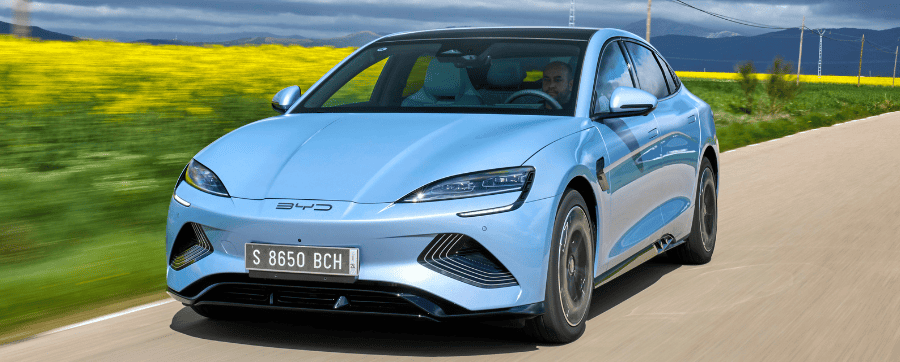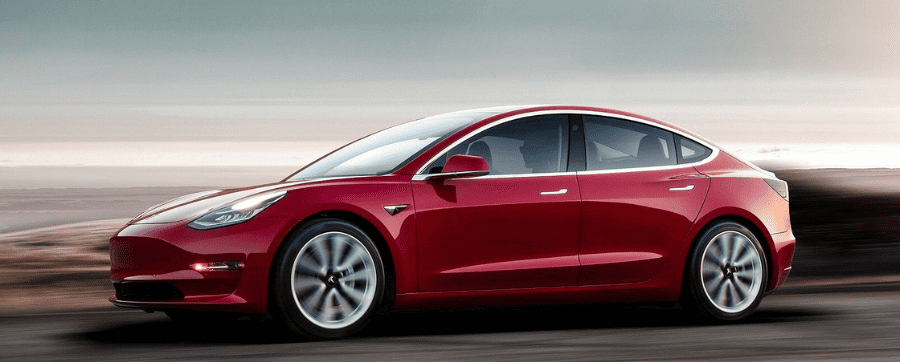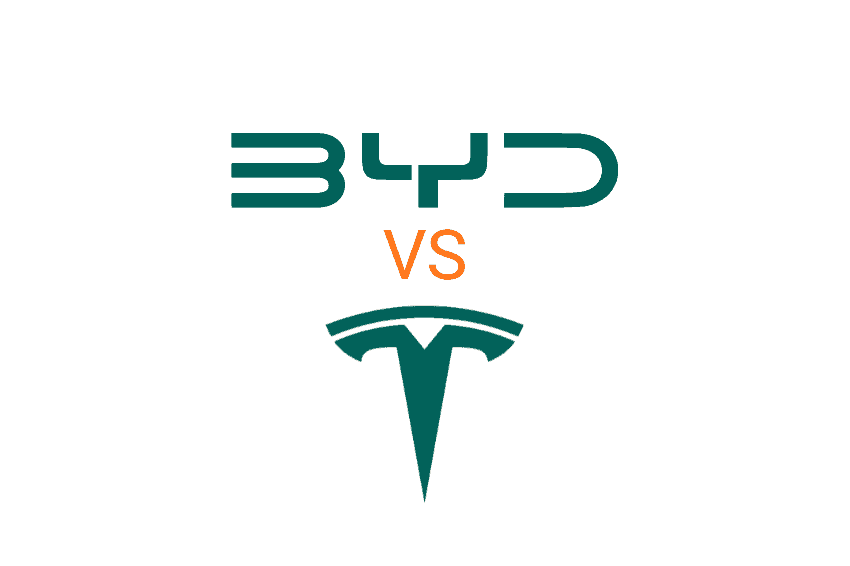- What is the difference between BYD vs Tesla?
- How does the range compare between BYD vs Tesla models?
- How does performance compare?
- BYD vs Tesla interiors and tech features
- How does the build quality of BYD vs Tesla compare?
- How do safety ratings compare?
- How does the charging infrastructure compare?
- How do brand prestige and resale values compare?
- Are the vehicles designed and built differently?
- Which company seems more innovative?
- Is BYD better than Tesla?
What is the difference between BYD vs Tesla?
BYD and Tesla are two major players in the electric vehicle market, but they have some key differences. Tesla was founded in 2003 in California and has become the world’s most valuable automaker.
BYD is a Chinese company founded in 1995 that manufactures a diverse range of products including electric vehicles.
When comparing BYD vs Tesla, there are contrasts in their business models, designs, technology, and target markets. Tesla has premium positioning, selling sleek vehicles with high performance.
BYD aims for the mass market, focused on practical and affordable models. Read on to learn more about whether BYD is better than Tesla.

How does the range compare between BYD vs Tesla models?
Range is a top priority for EV buyers, and this is an area where Tesla excels. Flagship Tesla models like the Model S, Model 3, and Model Y deliver estimated ranges of 350 to 405 miles on a single charge. The upcoming Tesla Cybertruck claim ranges up to 340 miles.
BYD’s models have more modest ranges. The Seal saloon offers an estimated range of up to 354 miles, but real-world results are likely lower. The Atto 3 subcompact crossover delivers a respectable 261-mile range. Overall, Tesla still leads for maximum distance on batteries.
How does performance compare?
Tesla has made its name on high-performance models with incredible acceleration. The Model S Plaid hits 60 mph in under 2 seconds thanks to its tri-motor AWD powertrain. Even the base Model 3 can reach 60 mph in 5.8 seconds. These saloons outpace most sports cars.
BYD vehicles prioritise efficiency and price over raw performance. The Seal has a zippy 3.7 second 0-60 mph time with available AWD. But in general, acceleration and handling aim to be smooth and steady rather than neck-snapping.

BYD vs Tesla interiors and tech features
In terms of interiors and technology, both automakers take a high-tech approach but with different philosophies. Tesla pioneered the modern EV interior with massive touchscreens, minimalist styling, and over-the-air software updates. Materials can be basic though, and build quality criticised.
BYD interiors feel more conventional but offer the latest tech like large touch displays, vehicle-to-load (V2L) charging, and advanced driver aids. The materials and fit-and-finish aim for mid-market sensibilities. BYD is also integrating safe and sustainable materials like amino plastics.
How does the build quality of BYD vs Tesla compare?
Tesla is still working to improve its build quality issues after rapid expansion. Panel gaps, paint defects, and hardware problems have shown up on initial vehicles. Tesla does address these defects quickly under its strong warranty program.
Having built over 30 million vehicles to date, BYD has perfected the art of manufacturing. The Chinese company can churn out high-quality. Consistency is said to be excellent across the BYD lineup with precision assembly and few issues.
Right now, BYD appears to have an edge in production quality.

How do safety ratings compare?
Safety is a priority for both Tesla and BYD when it comes to vehicle design. Tesla’s engineering has won extremely high marks for occupant protection. Models have achieved 5-star ratings from Euro NCAP. Advanced driver-aids are also standard.
BYD is still establishing its safety credentials as models enter global markets. The Han (UK Seal model) performed well in Chinese crash testing. Overseas tests are pending, but BYD prioritises safety with standard automated emergency braking, lane keep assist, and other features.
How does the charging infrastructure compare?
Tesla dominates when it comes to EV charging ecosystems, thanks to its vast proprietary Supercharger network with over 40,000 stations worldwide. Just pull up and charge rapidly with guaranteed plug availability. BYD relies on public charging networks which can be more sparse, crowded, and slow.
BYD vehicles support the CCS (combined charging system) DC fast charging format, which is commonly used in public stations across the UK. Tesla uses its own connector, requiring adapters for charging at standard stations.
How do brand prestige and resale values compare between BYD vs Tesla?

Tesla has one of the strongest brands in automotive, built on its leading reputation. BYD is becoming slowly more known outside of China, making its mark domestically and, eventually, internationally.
In terms of used values, Tesla EVs have typically retained values better than other brands. BYD’s relative obscurity overseas means resale data is still limited.
Are the vehicles designed and built differently?
Tesla designs its models in California. However, it has six huge gigafactories in California, Nevada, Berlin, Shanghai, Texas, and New York.
BYD handles almost the entire process itself as well, though it maintains design studios in global hubs like Los Angeles, Munich, and Tokyo to tailor vehicles to local tastes.
Both companies craft unique EVs from the ground up rather than converting existing models. But where Tesla is fixated on performance, BYD aims for mass-market sensibilities like comfort, utility, and affordability.

Which company seems more innovative?
Tesla garners more buzz for pushing the boundaries of EV capabilities. Developments like ultra-fast charging, advanced self-driving software, and paradigm-shifting models like the Cybertruck keep Tesla on the cutting edge.
BYD takes a more conservative approach to EVs, focused on perfecting practical models using proven technology like lithium iron phosphate (LFP) batteries. The latest tech goes toward manufacturing advances and cost reductions versus headline-grabbing features.
If you crave boundary-pushing EVs, Tesla still leads in innovation. But BYD’s advances make quality EVs more accessible. Book a FREE consultation to learn which approach resonates with you.
Is BYD better than Tesla?
In many respects, Tesla still maintains advantages over BYD when it comes to brand distinction, bleeding-edge tech, and mystique. But BYD holds its own when you consider the full package combining quality, capabilities, and value.
BYD may lack the glittering appeal of Tesla, but makes smart EVs accessible for regular families. Approachable and understandable, BYD points toward an electrified future for all. No hype needed.
Which brand is right for you depends on your priorities and preferences more than notions of “better.” We invite you to watch our car reviews to experience both BYD and Tesla vehicles on your own terms.


